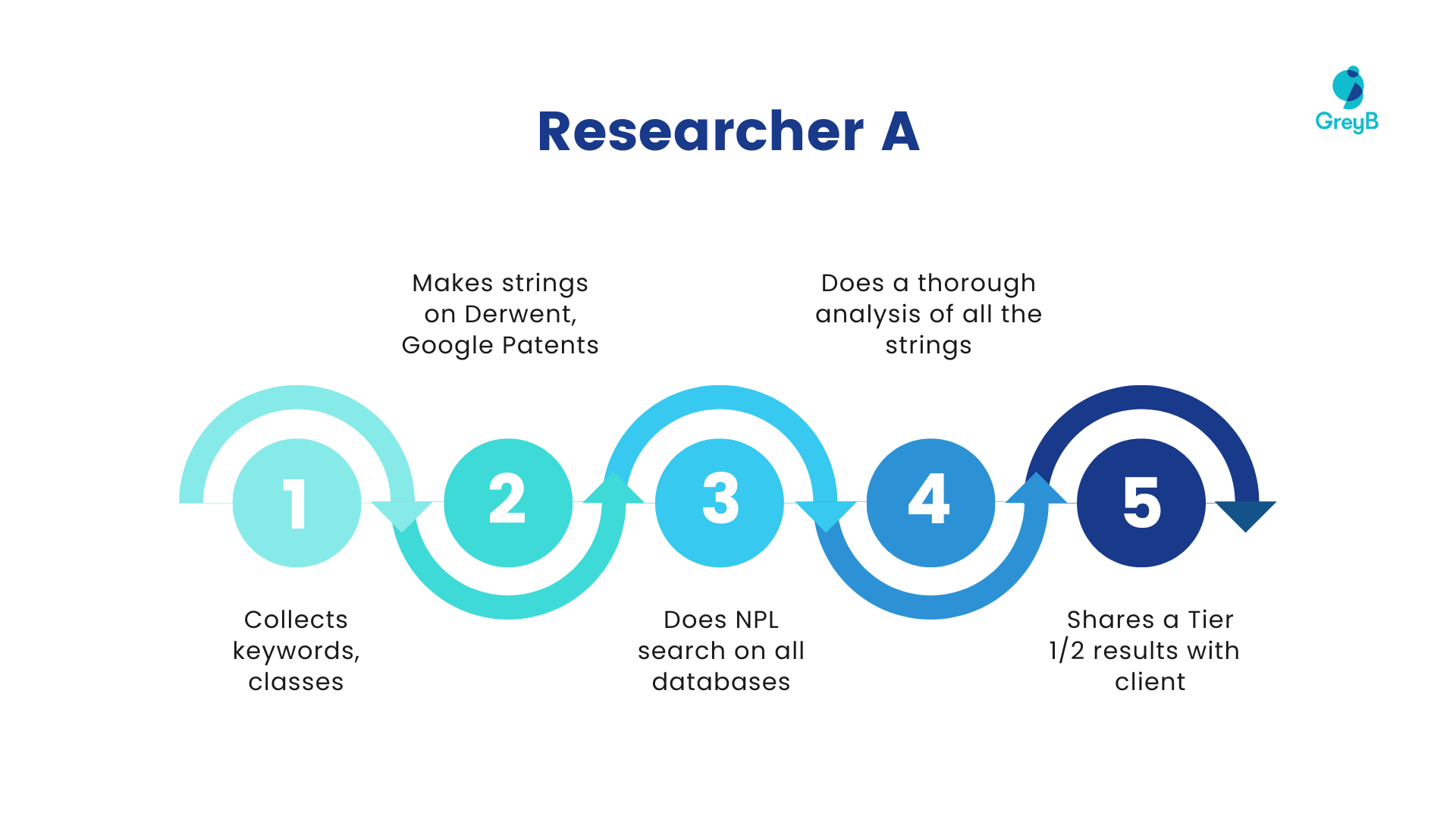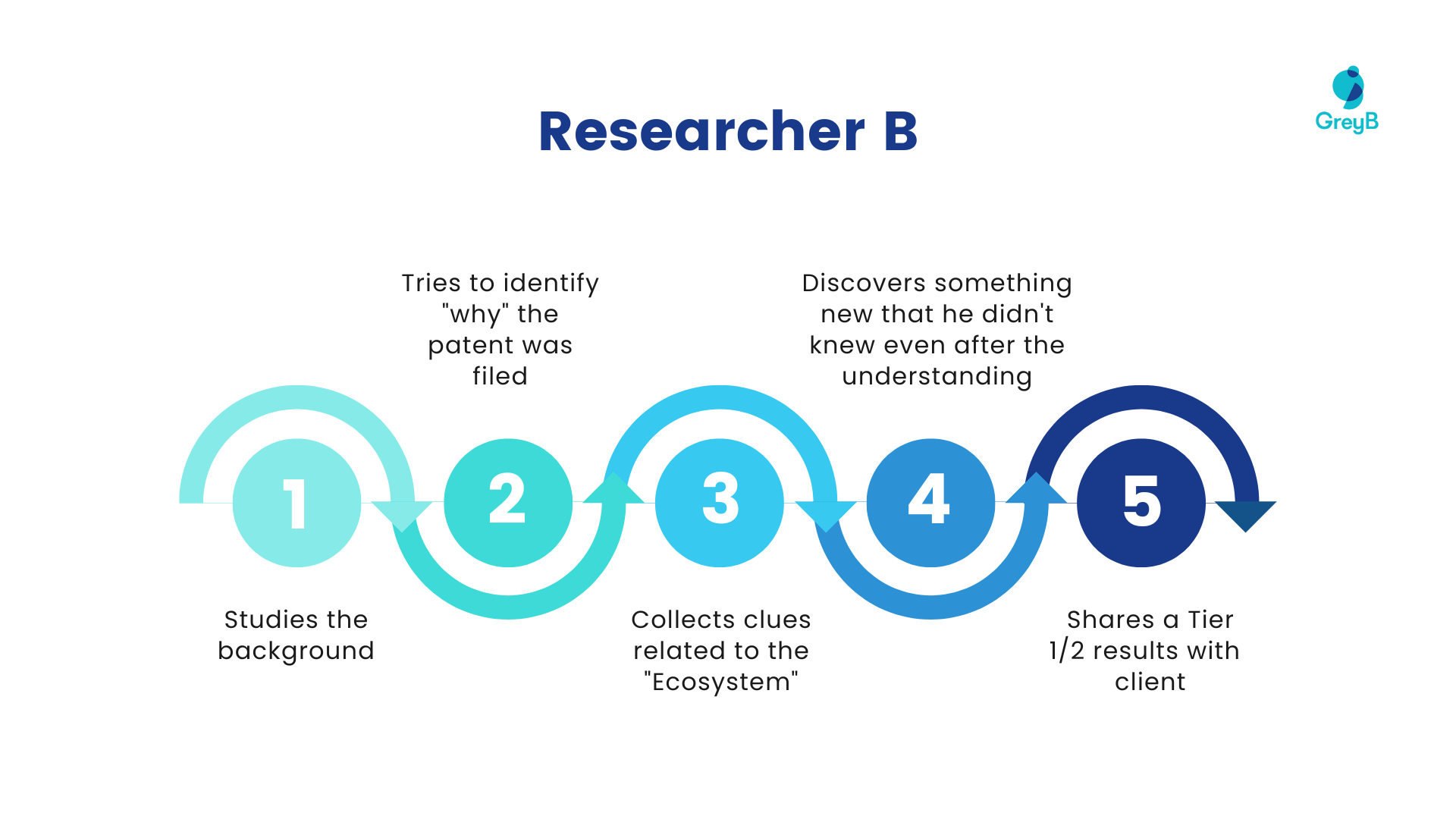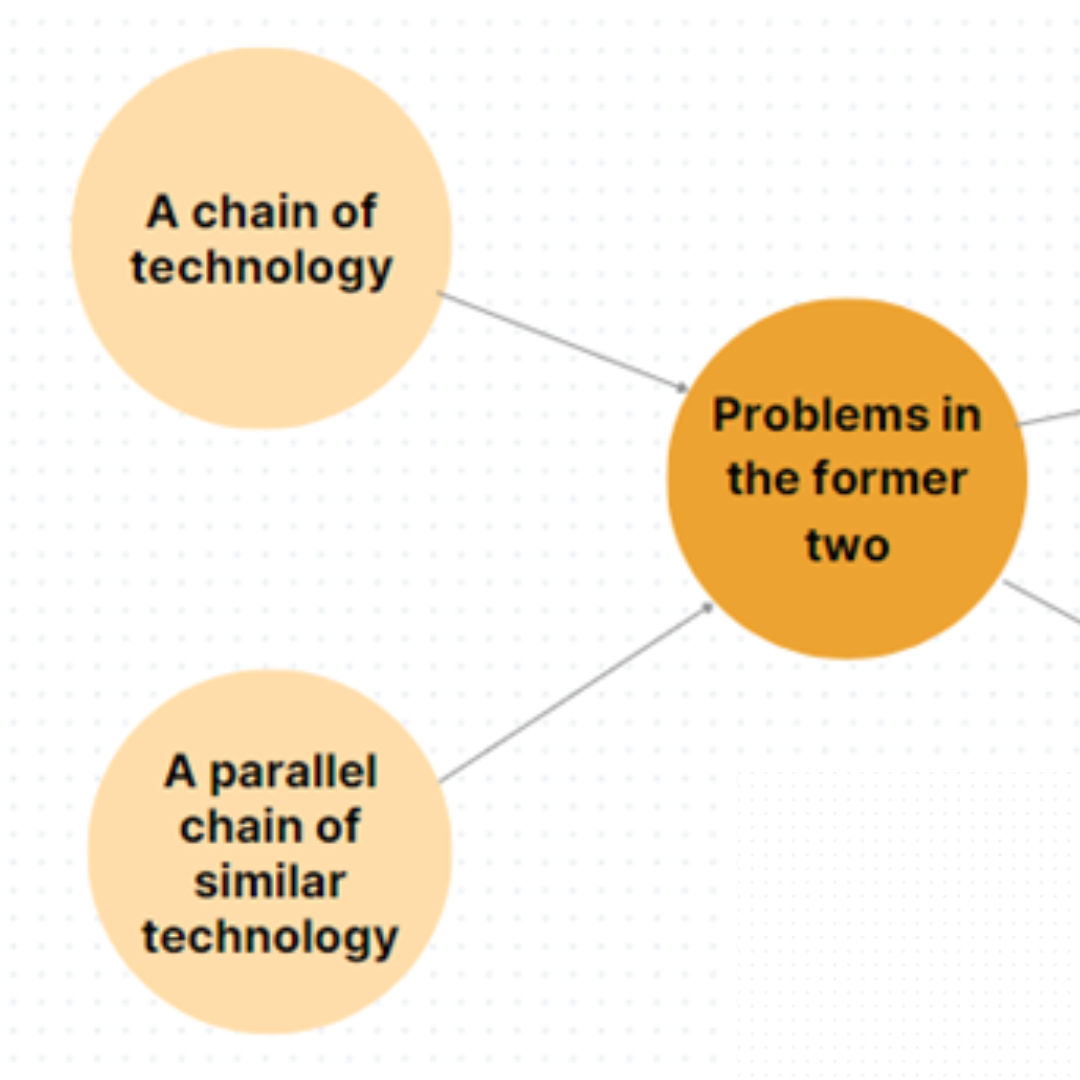GreyB’s Philosophy for Performing a Patent Prior Art Search!
Navigating the vast landscape of the prior art search is overwhelming, and there is always the risk of missing crucial prior art references. Partnering with the right research firm can make or break the whole deal.
Now, imagine having two researchers to choose from for your prior art project.


Researcher A specializes in standard analysis and provides you with the final results. The other is Researcher B, who takes a unique approach by studying the background of the subject patent and uses an ecosystem that brings him closer to why the patent was filed. Eventually, he uncovers details about the technology and shares Tier 1 and Tier 2 results with you.
- Which researcher’s method would be more impactful in finding comprehensive prior art?
- Would Researcher A’s expertise in traditional strategies yield the best results, or would Researcher B’s in-depth understanding of the subject patent and storytelling approach be more effective?
- Moreover, which method would provide greater consistency in identifying the most relevant prior art references?
These questions hold significant weight when choosing the best prior art search firm. So, let’s delve into the most important concept – The ecosystem, which defines the entire innovation cloud encompassing the patent domain and its associated innovations. Eventually, the concept of the ecosystem will help you determine the strength of a researcher.
Ecosystem and its Impact on Choosing the Direction for Prior art search
The ecosystem represents an interconnected chain of ever-evolving innovation. For better understanding, I have made a broad diagram illustrating the journey of a patent from inception to reality. You’ll notice that I have highlighted certain text in black and white, with the black text indicating higher significance.
Now, let’s consider the perspective of Researcher A. Will they be able to reach all three of the highlighted green endpoints?
Even if they manage to do so, it doesn’t necessarily imply that every patent will exhibit the same outcome because each patent’s journey is unique.
On the other hand, Researcher B, upon comprehending the invention, would begin from the initial two orange endpoints. Although unaware of where the arrows may lead, Researcher B recognizes the importance of moving in the direction they indicate.

The hardest step in Researcher B’s approach is understanding why the patent came into being, but once that milestone is achieved, it’s easy to progress further. Though I have discussed that the patent ecosystem is key to reaching the initial milestone, it’s important to understand that not every patent follows the same trajectory.
Two sides to every patent, and this is how to choose the right one!
A patent does not tell just one story but two. The first story is the one that the inventor cleverly drafts with the intention of diverting us from the ecosystem (Which we begin to believe when we first understand the subject patent). The second is one that we as a researcher discover ourselves (Unveiling the truth – the one which makes us good best researchers).
Let me explain this using a tech patent I recently worked on related to Wi-Fi standards (IEEE 802.11) and with a priority around January 2004. Using the concept of the ecosystem, first, I looked into why the patent was filed.
I came to know that the IEEE standard body decided to make a change in the Wi-Fi systems in November 2003. Originally, every access point used to have only one identifier (Just like your official name). Then, with the introduction of multiple IDs, access points could broadcast and support multiple network names. (For example, you may have multiple nicknames).
The problem arose because not all of the multiple identifiers introduced could be broadcasted. This made the scanning process for new devices more challenging as they had to actively search for hidden or non-broadcasted networks, leading to potential connectivity issues and delays.
The patent discussed the tech around this problem and presented a solution.
(Disclaimer: the exact technology has been hidden for confidentiality reasons)
So, if I go by the first story (the subject patent’s technology), which the drafter wants us to follow, it will uncover limited details. It won’t talk about how the standard body introduced multiple identifiers. Therefore, I would only have a restricted view of the tech.
On the contrary, when I figured out “Why” was this patent needed. I eventually came across the timeline given below and found this piece of code that I could never get to by the usual search approach. Hence, Researcher A’s approach would fail.
Meanwhile, using Researcher B’s prior art search process, I came across the standard body declaring the new process. In doing so, I discovered a new hotspot for searching (the timeline between November 2003 and January 2004).
On realizing that this problem may also be present in Linux, I searched the open-source code of Linux, and there it was, the actual prior art. It was released as an update to the drivers for the new devices to solve the issue generated by IEEE standard body’s new change.
This is a perfect example of how figuring out the why of the patent and studying the ecosystem helped us reach the prior art.
Conclusion
When finding the Tier 1 and Tier 2 results, the path taken is more important than the end result. However, this comes with much practice and tweaking the mind subconsciously, just like researcher B.
Searching for someone who falls under Researcher B? GreyB is your answer.
From the beginning, we follow the path of the ecosystem that has, in return, helped our clients get that bang on prior art results. Here, check out our client’s success stories.
If you have been struggling to find the right prior art search firm for your prior art needs, we are just a click away.
Authored by: Jaskaran Singh, Prior Art Team
Edited by: Annie Sharma, Editorial Team





